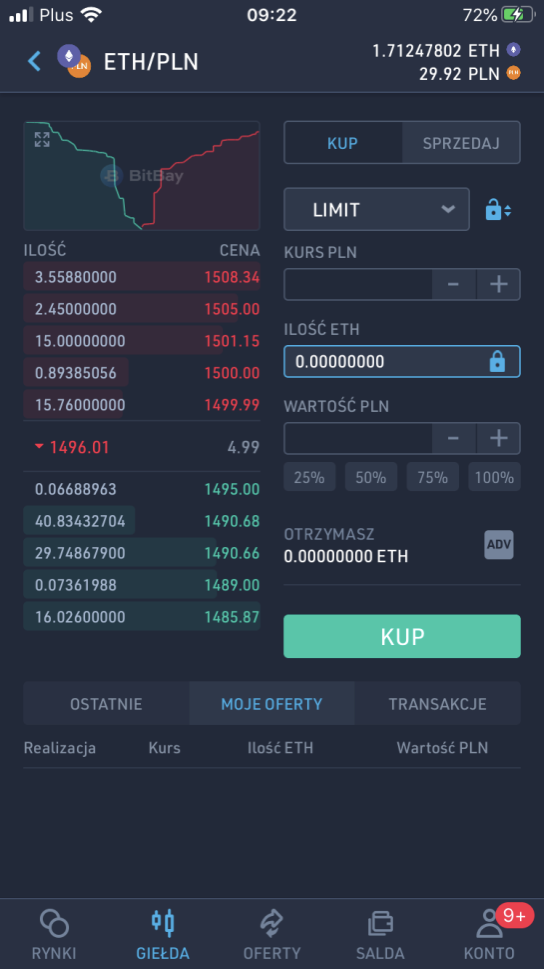Promotion of the mobile application on the example of mPay
mPay is a Polish mobile payment provider, operating on the market for 10 years. Its flagship product is the mPay app, launched in 2015, which enables m.in. buying public transportation tickets or paying for parking. Thanks to the app, users save time, which would have been spent standing in line at a kiosk or looking for change, and money – the app allows payment for the actual parking time used, and not, as in the case of parking meters, for as much as we paid for in advance. The mPay app is available for three major operating systems: Android, iOS and Windows.
The main goal was to increase the number of active users of the app. We wanted to do it according to two schemes: by acquiring smartphone owners who have not used such solutions so far, and by acquiring active users using the competition.
The campaign ran in late 2017-2018.
1. Increasing mPay's market share in mobile payments for public transport tickets.
2. Acquiring engaged users who will add a payment card after installing the app and use other features of the app.
3. Minimize the cost of acquiring new installations, and in turn, reduce the cost of acquiring active users.
Since the specific services available as part of the mPay platform are available in selected cities in Poland, the activities had to be precisely tailored geographically. The client was keen to emphasize in the messages promoting the application not only the possibilities it offers, but also its free nature. We decided to implement three types of campaigns focused on application installations. The first one (in Google search) was implemented as the most important source of quality leads – a person typing a specific search term related to the function of the mPay app into a search engine, for example. "parking app," will be more likely to convert after clicking on an ad. Campaigns in the ad network, including in mobile applications and on Google Play, Instead, they are characterized by high reach and much lower costs of acquiring conversions. New at the time, the type of Universal Campaign (UAC), Automatically optimized to acquire app installs, however, was a test item.
In addition, for each of the cities for which promotional activities were planned, a separate search campaign was set up with messages tailored to the offer. This allowed us to control not only the advertising messages themselves, but also the amount of budgets, the specificity of keywords or the rates resulting from competition in a particular market.
During the campaign, various ways of targeting campaigns in mobile apps were tested, including.in. For applications from categories such as Games, Shopping or Finance/Business Services.
During the activities, the key was the combination of analytical data and machine learning process, This made them more effective and easier to scale. The starting point was Reversing the entire process of studying the target group. First, the goal was to make the deepest possible use of already existing data in the app, then to profile users appropriately, learning their demographic and behavioral data. Critical to ensuring the effectiveness of UAC campaigns were 4 things:
– creating a location map and refining the modifiers for each city according to its effectiveness;
– providing as much data as possible to ensure that the universal campaign mechanism worked properly: integration with Firebase, tracking of user activity, conversion attribution and integration with Google Play console;
– switching from advertising texts and static creatives to more effective solutions: text, video resources and HTML5, which made the messages dynamic;
– launching UAC Install Advanced and UAC for Actions – campaign types within Google Ads focused on acquiring users who are more likely to convert after installation (e.g. ticket purchase).
Before launching, we built a goal matrix (matrix goals) and assigned a business value to each conversion. This allowed to know the exact value of the user after installation and create more effective campaigns. Thus, the implementation in Firebase consisted of breaking down by conversion type: ticket purchase, parking, phone top-up, etc.
During the year, Google migrated to UAC campaigns based on machine learning. We were 100% prepared for this with analytics implementations in Firebase integrated with Google Ads. This allowed us to use custom optimization methods:
UAC for Installs Advanced, i.e. Those that acquire a user more likely to perform a given conversion;
UAC for Actions, based on a cost-per-action (CPA) model, in which we actually participate in an auction to perform a post-installation action.
The campaign generated 32,375 new app installations; the final cost per installation was 15% lower than originally expected, while looking at the specifics of the sector, the amount of CPI was as much as 30-40% below average. Adding organic installs that are a consequence of ongoing campaigns, a total of 80,000 installations have been accumulated.
A few numbers at the end:
According to Business of Apps data, the CPI (cost per install) for mobile apps globally ranges from $0.44 to over two dollars. Its amount depends on many variables, m.in. type of platform (CPI on iOS is higher than on Google Play) or traffic source: within Search Ads are approx. 1 USD, while those coming from Paid Social can cost up to twice as much.
UAC – Universal app promotion campaigns.
Campaigns that make it easier to promote applications on Google services such as search, Google Play (app store), YouTube or Google's ad network. Unlike standard Google Ads efforts, in UAC there is no need to design individual ads. Instead, ad text suggestions and resources from the app information page of a particular store are used to create ads in different formats for different networks.
UACs offer three ways to optimize marketing goals:
Focusing on attracting more installations (UAC for Installs)
Focus on increasing the number of actions in the app (UAC for Actions)
Focus on increasing the value of action in the application (UAC for Value)
A Google-owned platform for managing all mobile app development processes: from programming issues, data storage and synchronization, to analytical activities and promotional issues (expanding the number of users and increasing their engagement).


